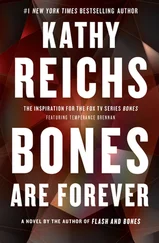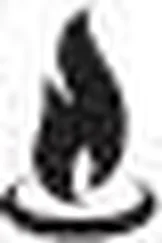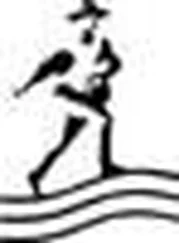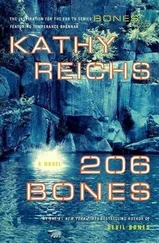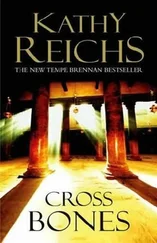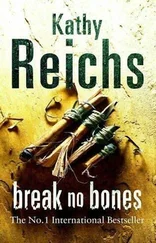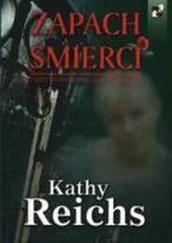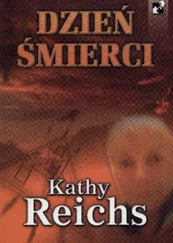Not in this section, I thought, taking in the Neoclassical-inspired obelisks, the massive aboveground box tombs, the temple-like family crypts, the granite and marble carved in intricate detail.
Burkhead gestured with the crowbar as we walked, a guide identifying pharaohs in the necropolis at Thebes. “Edward Dilworth Latta, developer. S. S. McNinch, former mayor.”
Massive hardwoods arced overhead, leaves shiny, trunks dark with moisture. Cypresses, boxwoods, and flowering shrubs formed a wet understory. Headstones curved to the horizon, gray and mournful in the persistent rain. We passed a monument to firemen, a tiny stone log cabin, a Confederate memorial. I recognized common funerary symbols: lambs and cherubs for children, blooming roses for young adults, the Orthodox cross for Greeks, the compass and square for Masons.
At one point Burkhead paused by a headstone engraved with an elephant image. Solemnly, he read the inscription aloud.
“‘Erected by the members of John Robinson’s Circus in memory of John King, killed at Charlotte, North Carolina, September twenty-second, eighteen-eighty, by the elephant, Chief. May his soul rest in peace.’”
“Yeah?” Slidell grunted.
“Oh, yes. The beast crushed the poor man against the side of a railroad car. The accident caused quite a sensation.”
My eyes drifted to a marble statue of a female figure several graves over. Struck by the poignancy of her pose, I wove my way to it.
The woman was kneeling with one hand cradling her face, the other hanging limply, clutching a bouquet of roses. The detail in her clothing and hair was exquisite.
I read the inscription. Mary Norcott London had died in 1919. She was twenty-four. The monument had been erected by her husband, Edwin Thomas Cansler.
My mind floated a picture of the skull in my lab. Did it belong to Susan Clover Redmon?
Mary had been Edwin’s wife. She’d died so young. Who had Susan been? What calamity had cut her life short? Ended her happiness, her suffering, her hopes, her fears?
Had grieving parents placed Susan’s coffin lovingly in its tomb? Remembered her as a little girl coloring inside the lines, boarding the school bus with her brand-new lunch box? Had they cried, heartbroken at the promise of achievement never to be fulfilled?
Or had it been a husband who most mourned her passing? A sibling?
Slidell’s voice cut into my musing. “Yo, doc. You coming?”
I caught up with the others.
Further east, the cemetery’s subtly curvilinear design gave way to a gridlike arrangement of graves. The rain was falling harder now. I’d abandoned my soggy sweatshirt for an MCME windbreaker. Bad move. The thin nylon was keeping me neither warm nor dry.
Eventually we entered an area with few elaborate markers. The trees were still old and stately, but the layout appeared somehow more organic, less rigid. I assumed we’d crossed the boundary once secured by chain-linking.
Burkhead continued his guided tour.
“Thomas H. Lomax, A.M.E. Zion Bishop; Caesar Blake, Imperial Potentate of the Ancient Egyptian Arabic Order and leader of Negro Shriners throughout the nineteen-twenties.”
The section’s most prominent feature was a small, front-gabled structure of yellow and red brick. Raised bricks formed diamond-shaped decorative motifs on the side and rear elevations and spelled SMITH above the plain wooden door.
“W. W. Smith, Charlotte’s first black architect,” Burkhead said. “I find it fitting that Mr. Smith’s tomb reflects his distinctive style of brickwork.”
“How many stiffs you got in this place?” Slidell asked.
“Approximately fifty thousand.” Burkhead’s tone gave new meaning to the term “disapproving.”
“Make a great setting for one of them zombie movies.”
Squaring his already square shoulders, Burkhead pointed the crowbar. “The vandalism occurred over here.”
Burkhead led us to a tiny concrete cube centered among a half dozen graves, each with a headstone bearing the middle or last name Redmon. The name also crowned the tomb’s front entrance.
Handing me the crowbar, Burkhead collapsed his umbrella and leaned it against the crypt. Then he produced a key and began working a padlock affixed at shoulder height to the right side of the door.
I noticed that the lock appeared shinier and less rusted than the nails and hinges embedded in the wood. Adjacent to it, deep gouges scarred the jamb.
After freeing the prongs, Burkhead pocketed both lock and key, and gave the door a one-handed push. It swung in with a trickle of rust and a Hollywood creak.
As one, we pulled out and flicked on our flashlights.
Burkhead entered first. I followed. Slidell brought up the rear.
The odor was dense and organic, the smell of earth, old brick, decayed wood, and rotten fabric. Of moths and rat piss and dampness and mold.
Of Slidell’s pastrami breath. The space was so small we were forced to stand elbow to elbow.
Our flashlights showed built-in ledges straight ahead and to the left of the door. Each held a simple wood coffin. Bad idea for riding out history. Good idea for a quick dust-to-dust sprint. Each box looked like it had gone through a crusher.
Wordlessly, Burkhead unfolded a photocopied document and stepped to the shelves opposite the door. Shadows jumped the walls as his gaze shifted back and forth from the paper in his hand to first the upper, then the lower coffin.
I knew what he was doing.
The dead do not always stay put. I once did an exhumation in which Grandpa was three plots over from the one in which he was supposed to have been buried. Another in which the deceased lay in a plot containing two stacks of three. Instead of bottom left, as shown in the records, our subject was second casket from the top right.
First rule in a disinterment: Make sure you’ve got the right guy.
Knowing the vague nature of old cemetery records, I assumed Burkhead was checking photos or brief verbal descriptions against observable details. Casket style, decorative hardware, handle design. Given the obvious age of the coffins, I doubted he’d be lucky enough to have manufacturers’ tags or serial numbers.
Finally satisfied, Burkhead spoke.
“These decedents are Mary Eleanor Pierce Redmon and Jonathan Revelation Redmon. Jonathan died in 1937, Mary in 1948.”
Moving to the side wall, Burkhead repeated his procedure. As before, it took him several minutes.
“The decedent on top is William Boston Redmon, interred February 19, 1959.”
Burkhead’s free hand floated to the lower coffin.
“This is the burial that was violated seven years ago. Susan Clover Redmon was interred on April 24, 1967.”
Like her relatives, Susan met eternity in a wooden box. Its sides and top had collapsed, and much of its hardware lay on a piece of plywood slid between the casket and the shelf.
A crack ran a good eighteen inches along the left side of the cover. Over it, someone had nailed small wooden strips.
“Mr. Redmon declined to purchase a new casket. We did our best to repair and reseal the lid.”
Burkhead turned to me.
“You will examine the decedent here?”
“As per Mr. Redmon’s request. But I may take samples to the ME facility for final verification.”
“As you wish. Unfortunately, the coffin key has gone missing over the years.”
Stepping to one end of the shelf, Burkhead gestured Slidell to the other.
“Gently, Detective. The remains are no longer of any great weight.”
Together, the men scooted the plywood forward and lowered it to the floor. The displaced casket filled the tiny chamber, forcing our little trio back against the walls.
With scarcely enough room to maneuver, I opened my pack and removed a battery-operated spot, a magnifying lens, a case form, a pen, and a screwdriver.
Читать дальше


